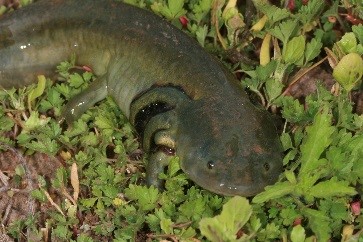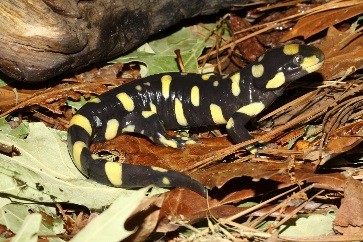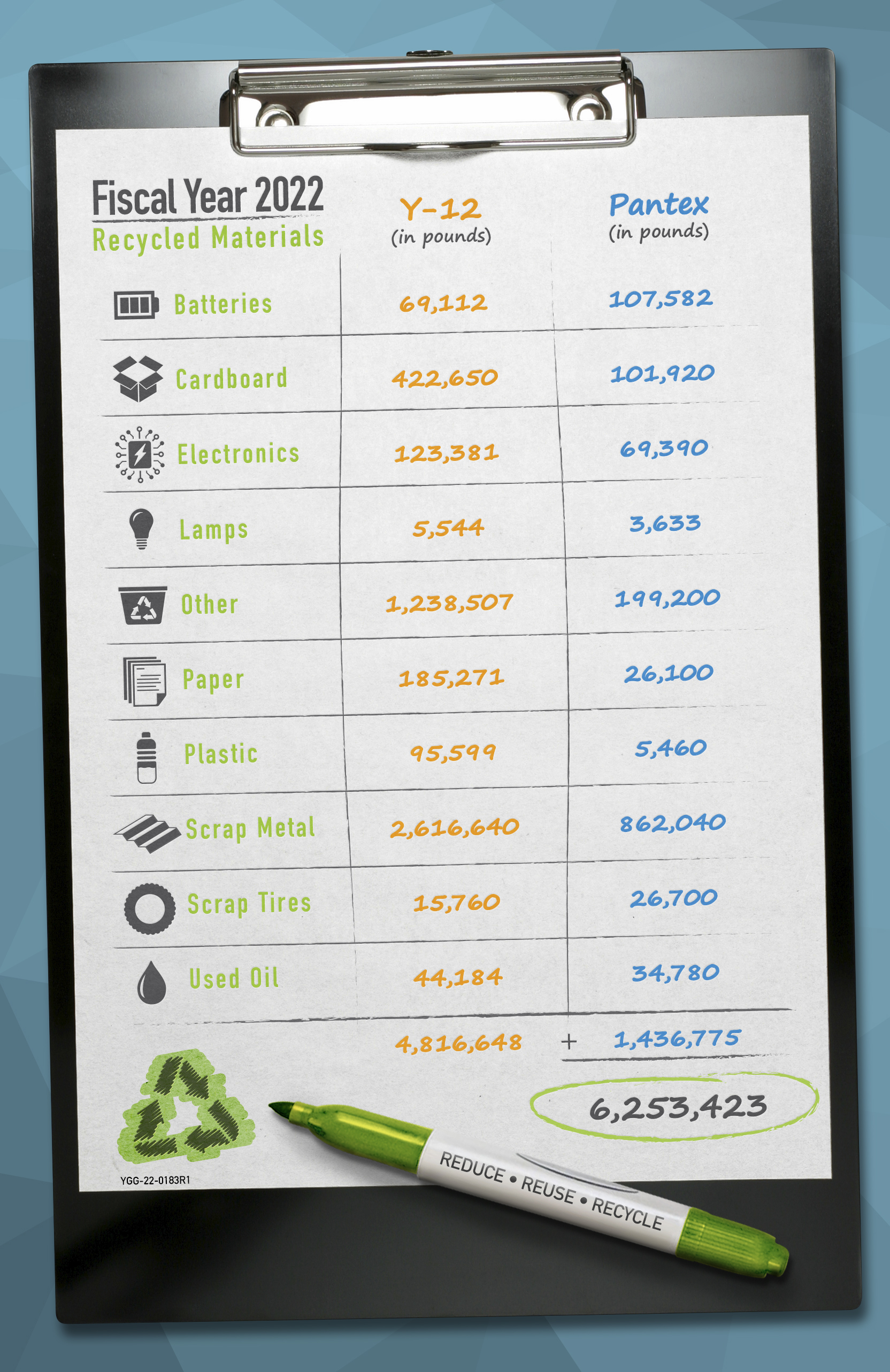Pantex Earth Day efforts – maintaining sustainability
New retention pond at Pantex will hold 8 million gallons of beneficial recycled water to be used for 600 acres of crops at the Texas Tech University Research Farm.
Sustainability is the key word when it comes to CNS's efforts in recycling and being a good environmental steward.
Tracy Griffiths, Pantex’s new Environmental Science senior associate, is working alongside Alicia Barley with Pantex’s Sustainability program to meet some high-level goals on their checklist:
- Reaching carbon pollution-free electric by 2030 (currently, Pantex is at 50%)
- Initiating the fleet electrification program
- Building a net-zero emissions portfolio by 2045, and creating a 50% emissions reduction by 2032
- Developing climate-resilient infrastructure and operations
- Assisting making our Environmental Management System a business management system to support the achievement of DOE sustainability goals
“To me sustainability is so important because it is an additional way to preserve the Earth for future generations, by slowing down the affects that humans are having on the environment and climate,” said Alicia Barley, Environmental Sustainability Specialist and EMS Coordinator. “It’s easy to think that the small things don’t matter like recycling a water bottle, or reusing that water bottle instead of grabbing a new one but these small acts really do add up especially at a site as big as Pantex.”
When it comes to Pantex’s recycling efforts, one of the biggest projects focuses on water, actively remediating its underground water. Combined with treated wastewater, water will be sent through a pipeline to the adjacent holding pond, currently under construction.
When completed, the new retention pond will hold 8 million gallons, which equals about 12 Olympic-sized swimming pools. Using a Pivot Irrigation System, about 600 acres of crops will receive the treated wastewater for beneficial reuse on land located east of FM2373 that is owned by DOE. Since the start of remedial efforts at Pantex over the last few decades, more than 1.7 billion gallons of water have been beneficially reused … enough to fill the Dallas Cowboys AT&T Stadium twice.
Since the water reclamation system contains no fish, the indigenous tiger salamander takes advantage of a predator-free environment, laying eggs in the recycled water system. The eggs hatch into larvae known as “water dogs,” and over the next few months, they sprout hind legs, lose their gills, and are able to leave the water. Some, however, become “neotenic”—sexually maturing, but maintaining their larval form. They become enormous, develop teeth, and become cannibalistic, eating salamander larvae, all because of Pantex’s water reclamation efforts and maintaining a delicate balance in the environment.

Adult “neotenic” salamander found at Pantex.

Adult tiger salamander found at Pantex.
“It’s an exciting time to be in Sustainability because we are right at the cusp of big things in renewable and clean energy, electric vehicles and greenhouse gas reduction. As a DOE site we get the privilege to be leaders in the sustainability realm and start moving toward a cleaner future,” added Barley.
The layers of the Pantex Sustainability program cascade, linking to just about every program in some way; millions of pounds of refuse that never makes it to a landfill, driving emissions-free vehicles, water recycling that benefits not only crops, but also indigenous wildlife. All due to reaching and sustaining--- sustainability.

